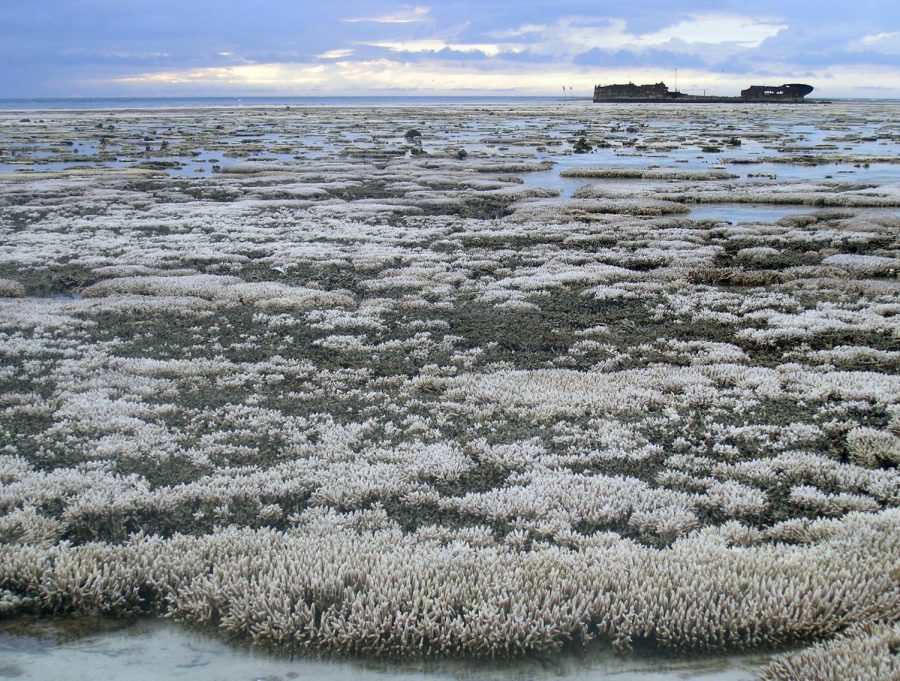Dawe: Coral bleaching warns of a dismal future for Earth’s climate
Oregon State University / CC BY-SA
Rising water temperatures are the leading cause of coral bleaching in the Great Barrier Reef of Australia, where its biodiversity and other essential, environmental assets are harmed.
April 10, 2020
The Great Barrier Reef is one of the most beautiful and important pieces of nature on this planet. It contains over 3,000 species of mollusks, 1,625 species of fish, 30 species of whales and dolphins, 100 types of jellyfish and 133 sharks and dolphins. Along with its significant biodiversity, it also protects the coastlines from damaging storms, assists in carbon and nitrogen-fixing and helps nutrient recycling. This important ecosystem is facing danger from tourism, pollution, agricultural runoff and, most importantly, climate change.
Climate change is the biggest problem facing coral reefs everywhere. The heating of the oceans stresses the coral, which causes them to expel the algae in their tissues, turning them white. Usually, an El Niño event, like the one that is happening this year, heightens temperatures, which increases the likelihood of a bleaching event. However, this year the bleaching was caused without any help from the Pacific climate oscillation event, showing how dangerous the climate has become. It was a huge, and devastating bleaching event, second only to the one that happened in 2016, which killed half of all shallow-water coral.
The danger that this event is revealing, is that major climate events are happening without special circumstances. This shows how much we are damaging our climate and how quickly it has progressed. Scientists are also warning that these will be happening more frequently and that they are, shockingly, caused by human activities. In 2016-2017 the reef had its first back-to-back bleaching event, and the one this year will make the third in five years. Also, this year is the first time that the damage has been so widespread. In the past, the southern portion of the reef has been spared from the damage, and because it is so unaccustomed to bleaching events, it is in more danger than the other regions. It contains several heat-sensitive Acropora corals.
While all this might seem like a shock, people have known about this for ages. Even the Ancient Greeks believed that humans had the possibility to enact change on the climate. In the 1820s, Joseph Fourier, a French mathematician, and physicist proposed the idea that a thin layer of gases traps heat within the Earth’s atmosphere. The idea has stuck and it’s what led Irish scientist John Tyndall to explore the idea of gases absorbing sunlight. His experiments showed that coal emissions, containing CO2, can absorb sunlight. In 1895, Svante Arrhenius, a Swedish chemist, found that if CO2 emissions were cut in half, global temperature could be reduced by 5 degrees Celsius, or 9 degrees Fahrenheit.
We have known the effect of greenhouse gases on the environment for 160 years, and we have known the effect of a reduction of greenhouse gases on global temperatures for 125 years. Instead, we have pumped more gases into the air and oil into the water. The fact that action is only being taken now, is disappointing.
There is legislation put in place to help protect the coral reefs. The United States Coral Reef Task Force was established in 1998 to help protect coral ecosystems. The National Ocean Atmospheric Administration also has the responsibility and expertise to protect coral reefs. However, this is obviously not enough as the reefs are still in danger and still at risk. More action needs to be taken to try and salvage what we have left of our natural resources before we are left with nothing.









